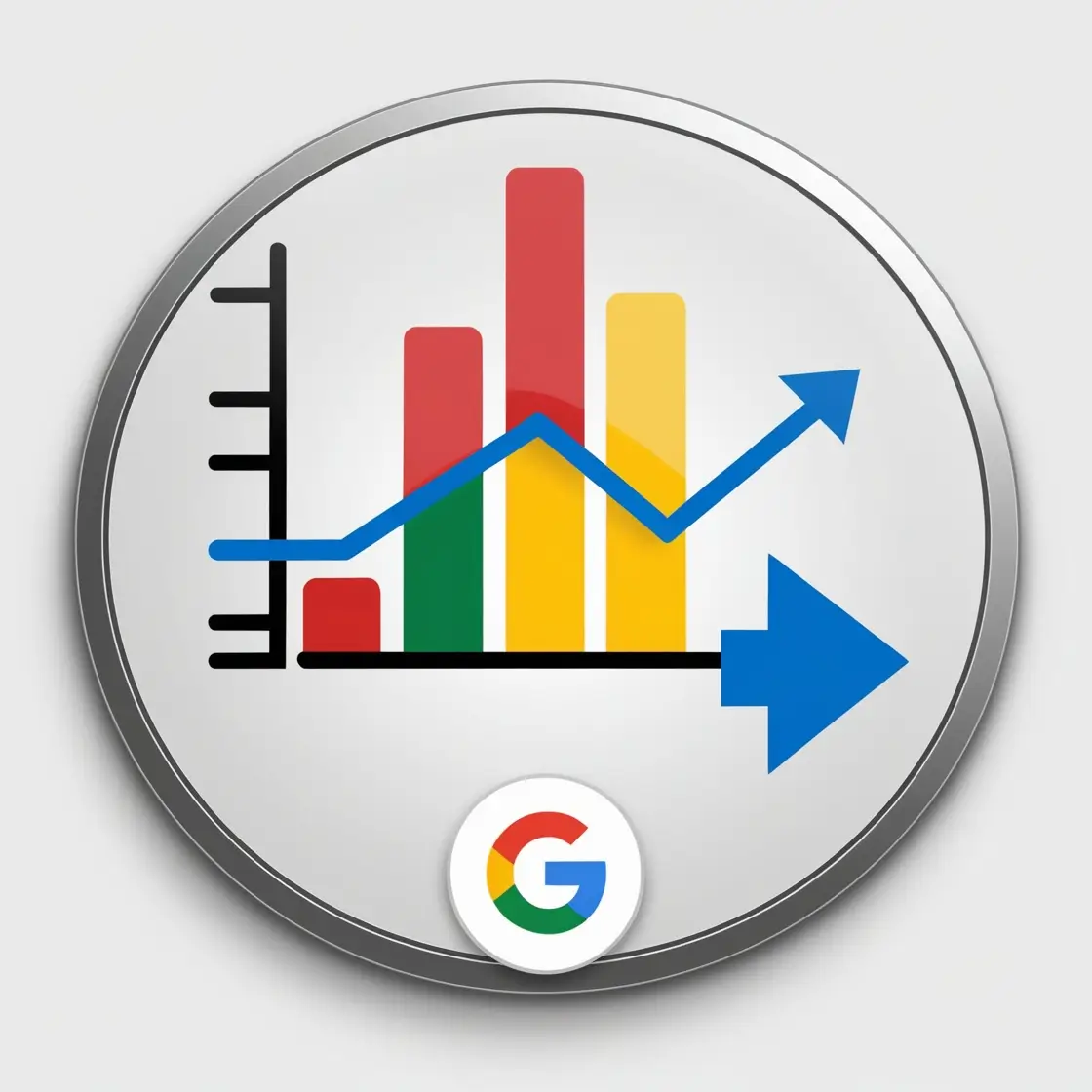If you want to make smart investments in today’s fast-paced financial world, you need to keep up with the newest stock prices, market trends, and company news. Access to accurate and thorough data is critical for everyone involved in the financial markets, whether they are seasoned pros or just getting their feet wet. In this regard, Google Finance serves as an excellent resource for investors of any experience level.
How does Google Finance work?
Google Finance is an open-source web application that gives anyone access to real-time financial data. Beginning with its 2006 launch, Google Finance provides a suite of tools for monitoring equities, mutual funds, and both public and private enterprises. For those seeking up-to-date market information, it serves as a central repository for financial data, news, and analytics.
Google Finance’s rising popularity is at least in part due to the fact that it does not charge users for access to its premium services or features, unlike competing platforms. Anyone interested in keeping tabs on the financial markets will find it an indispensable tool thanks to its user-friendly interface and the power of Google’s massive resources.
Key Features of Google Finance
From basic stock tracking to in-depth market analysis, Google Finance has you covered. Here are a few of its notable features:
1. Real-Time Stock Quotes
If you want the most up-to-date prices for the stocks you’re following, Google Finance has you covered with real-time stock quotations. Day traders rely on this feature heavily since it allows them to make quick decisions using the most up-to-date information.
2. News Aggregation
Reuters, Bloomberg, and CNBC are just a few of the many business and financial news sources that Google Finance compiles. With this feature, customers can monitor all of the news that could have an impact on their investments from a single location. Sort the news stories according to your interests, the firms you follow, or the state of the market as a whole.
3. Interactive Charts
The ability to create interactive charts is a great feature of Google Finance. Looking at historical data, comparing stock performance over time, and identifying trends are all made possible with these charts. To examine how many equities compare to one another, you can overlay other measures, such as trade volume. You can focus on certain time periods or acquire a bird’s-eye view with the help of the user-friendly controls.
4. Company Overview
Any public firm can have its financials broken down in great detail on Google Finance. Market cap, EPS, P/E ratio, and dividend yield are all important financial indicators included in this. The portal also provides vital company descriptions and links to news stories to help users gain deeper insights in addition to these figures.
5. Portfolio Tracking
A personalized portfolio may be easily built and managed with Google Finance. To keep tabs on the value of your portfolio as a whole, you can add stocks, mutual funds, or ETFs to a watchlist and track their performance in real time. With this function, you can easily monitor your investments and act swiftly when necessary.
6. Global Market Overview
Google Finance provides an extensive review of financial markets around the world, not only in the United States. The portal offers data from all around the globe, so you may follow the performance of major exchanges in Europe, Asian markets, or commodities like oil and gold.
7. Currency and Cryptocurrency Tracking
You can get up-to-the-minute information on cryptocurrency and currency markets on Google Finance, in addition to stock and bond markets. You can simply monitor the most popular currency pairs, like USD/EUR, or investigate the most recent developments in cryptocurrencies like Bitcoin, Ethereum, and others.
8. Economic Indicators
Investors can gain a better understanding of the macroeconomic dynamics that may impact their portfolios by using Google Finance, which also provides insights into larger economic statistics such as unemployment rates, GDP growth, inflation rates, and more.
How to Use Google Finance for Smarter Investing
Following our review of Google Finance’s primary features, we will dive into how you may use the platform to improve your investing decision-making.
1. Setting Up Your Portfolio
You need to set up your portfolio before you can use Google Finance properly. The first step is to make a list of all the stocks, ETFs, and mutual funds that you own or would like to follow. As soon as you include them in your portfolio, Google Finance will send you alerts about their current price, any relevant news, and key performance indicators. By consolidating all of your data into one location, this portfolio feature not only helps you save time, but it also improves your ability to monitor the performance of your investments over time.
2. Monitor Market Trends
Google Finance’s capacity to give real-time information on market developments is one of its most significant aspects. The news aggregation tool allows you to stay updated on worldwide events, such as a rapid drop in tech stocks or a spike in renewable energy stocks, so you may make immediate adjustments to your portfolio. If you want to see how things like currency changes and geopolitical events could affect your assets on a worldwide scale, you can use the global market overview function.
3. Leverage Interactive Charts
Google Finance has one of the most user-friendly charting tools available, which is a must-have for assessing stock performance. Google Finance charts give the information you require, whether you’re a technical trader or simply someone who wishes to comprehend long-term patterns. For example, you can examine the impact of news events on stock prices, compare a stock’s performance over a year to its competitors, and overlay crucial indicators like moving averages. Gain insights into both short-term fluctuations and long-term patterns by zooming in and out on certain timeframes.
4. Research New Opportunities
Discovering fresh investment possibilities is a breeze with Google Finance. To explore unfamiliar firms’ detailed data, use the company overview tool. To determine if the company is a good investment, you should look at financial ratios such as P/E, check if dividends are being paid, and read up on the most recent news. Google Finance provides insights into cryptocurrency values and allows users to watch the movement of these assets relative to more traditional markets, making it a useful tool for anyone interested in emergent areas like cryptocurrencies.
5. Keep Tabs on Economic Indicators
Understanding the larger economic climate is just as important as knowing which firms to invest in for successful investment. To monitor important economic indicators like inflation and unemployment rates, you can use the tools provided by Google Finance. You may put market movements into context and use these indicators to foresee opportunities and threats.
Benefits of Using Google Finance
There are a number of benefits to managing your portfolio and doing financial research with Google Finance:
1. User-Friendly Interface
In the realm of financial research, Google Finance boasts one of the most user-friendly interfaces. No matter your level of experience with investing, you will find the platform’s layout and design to be user-friendly and conducive to finding the information you need.
2. Comprehensive Financial News
No need to visit a number of different websites to keep up with the latest financial news; Google does it all for you. Stay informed about all the latest happenings with the news feed feature.
3. Free and Accessible
Google Finance is free to use, in contrast to many other financial research platforms that demand payment for access to premium data and features. As a result, it can accommodate a broad spectrum of investors, from novices to seasoned pros.
4. Wide Range of Data
In addition to the stock market, bonds, commodities, currencies, and cryptocurrencies are all tracked by Google Finance. Google Finance offers a comprehensive perspective of a wide range of financial markets, including oil prices, bond yields, and the newest crypto trends.
5. Integration with Google Ecosystem
Integrating with other Google products is a breeze with Google Finance because it is part of the bigger Google ecosystem. Take Google Sheets as an example; it’s a breeze to import financial data and use it to make your own reports and trackers.
Limitations of Google Finance
Google Finance is an excellent tool, but it has certain restrictions:
1. Lack of Advanced Features
Google Finance is missing several complex features that other premium financial platforms offer, like the ability to do thorough technical analysis or use sophisticated screening methods. Investors wishing for more sophisticated charting tools or access to data in real-time might be disappointed with the platform.
2. Limited Coverage of Mutual Funds
When compared to other platforms, Google Finance’s coverage of mutual funds and smaller financial instruments is rather lacking, but it does cover equities, exchange-traded funds, and major worldwide markets.
3. No Mobile App
Even though Google Finance can be accessed using mobile web browsers, it lacks a dedicated mobile app compared to its rivals. For those who like to keep tabs on their investments when they’re away from the office, this could be a drawback.
Final Thoughts: Is Google Finance Right for You?
If you’re seeking a free, easy, and comprehensive way to keep tabs on stocks, manage your portfolio, and read up on market news, Google Finance is a great tool to use. Everyday investors can benefit from its simplicity, extensive data coverage, and smooth connection with Google’s ecosystem, even though it lacks the advanced capabilities seen in premium platforms.
Google Finance is useful for everyone from novice traders keeping tabs on a few of markets to seasoned investors who want to keep an eye on a few stocks. It is a good option for anyone trying to make sense of the complicated financial world because of its real-time data, news aggregation, and user-friendly portfolio management features.




